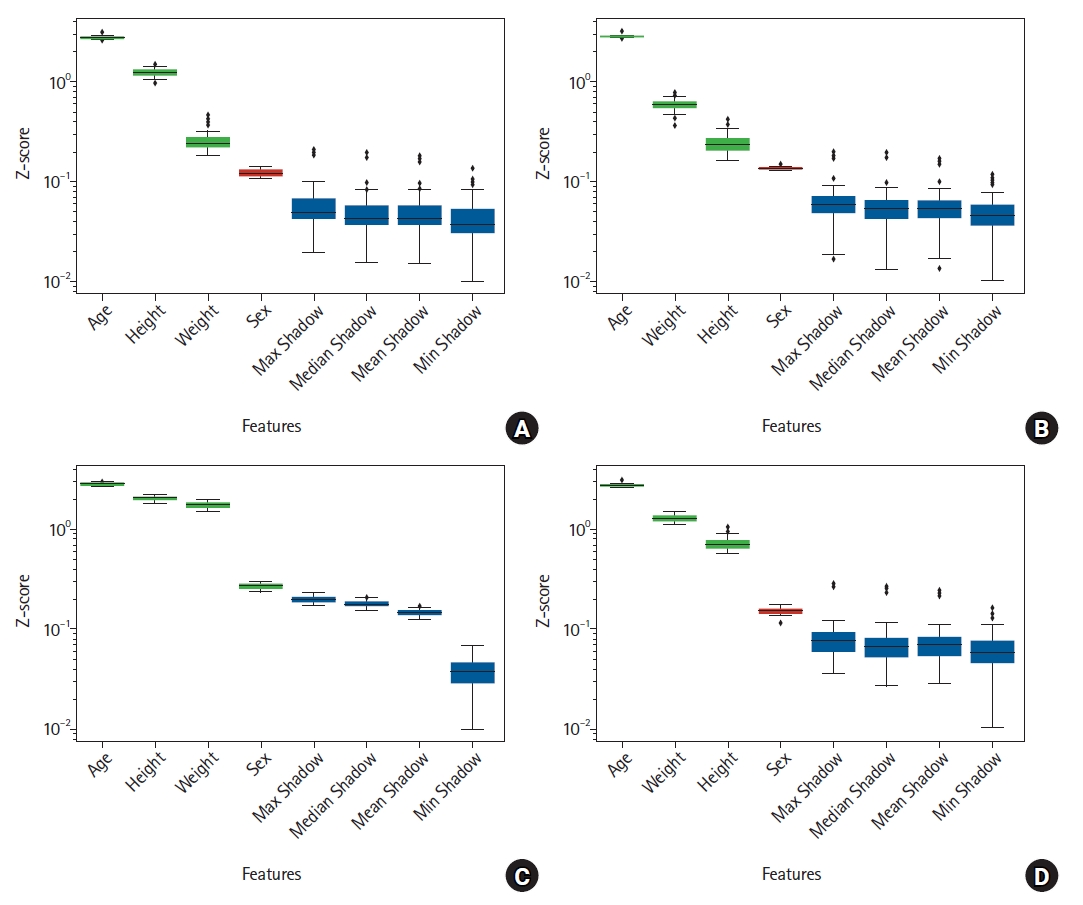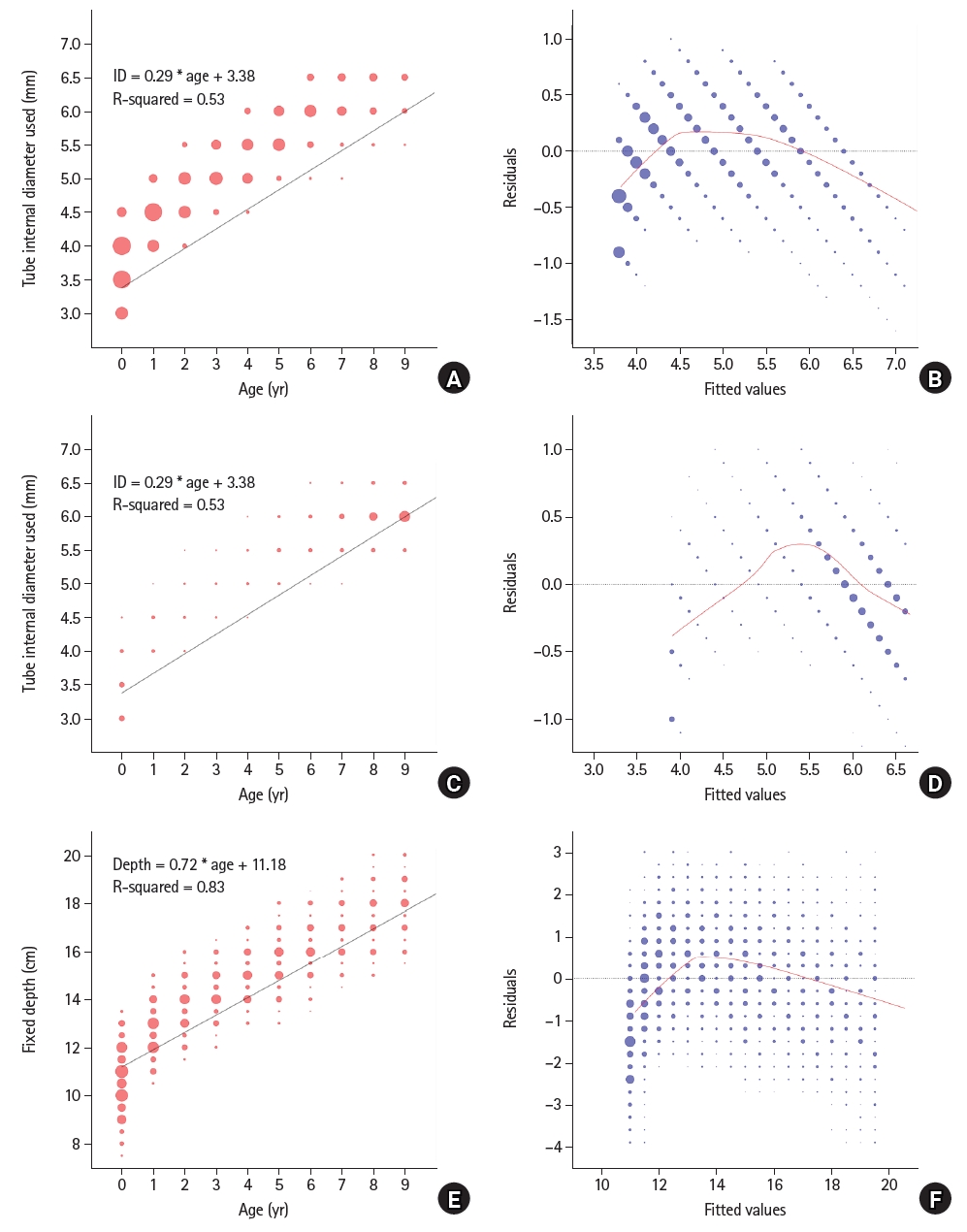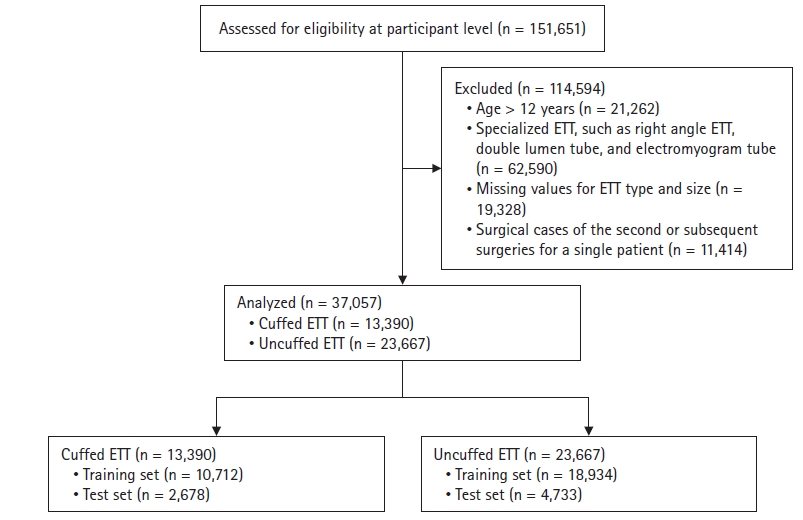 |
 |
| Korean J Anesthesiol > Volume 76(6); 2023 > Article |
|
Abstract
Background
Methods
Results
NOTES
Funding
This study was supported by a grant from the Korea Health Technology R&D Project through the Korea Health Industry Development Institute (KHIDI), funded by the Ministry of Health & Welfare, Republic of Korea (grant number HI21C1074).
Conflicts of Interest
Hyung-Chul Lee was an Editor for the Korean Journal of Anesthesiology from 2020 to 2022. However, he was not involved in any process of review for this article, including peer reviewer selection, evaluation, or decision-making. There were no other potential conflicts of interest relevant to this article.
Data Availability
The datasets generated during and/or analyzed during the current study are available in the github repository (https://github.com/Hyeonsik/endotracheal_tube).
Author Contributions
Hyeonsik Kim (Data curation; Formal analysis; Software; Writing – original draft)
Hyun-Kyu Yoon (Conceptualization; Supervision)
Hyeonhoon Lee (Formal analysis; Software)
Chul-Woo Jung (Conceptualization; Writing – review & editing)
Hyung-Chul Lee (Conceptualization; Data curation; Formal analysis; Funding acquisition; Investigation; Supervision)
Supplementary Materials
Supplementary Table 1.
Supplementary Table 2.
Supplementary Fig. 1.
Supplementary Fig. 2.
Supplementary Fig. 3.
Fig. 2.

Fig. 3.

Table 1.
Table 2.
Values are presented as numbers (95% CI). GBRT: gradient boosted regression tree, MLR: multiple linear regression, ETT: endotracheal tube, ID: internal diameter. *Penlington’s formula (ID of the uncuffed ETT [mm] = age in years / 4 + 4.5), †Cole’s formula (ID of the uncuffed ETT [mm] = age in years / 4 + 4.0), ‡Duracher’s formula (ID of the cuffed ETT [mm] = age in years / 4 + 3.5).
Table 3.
Values are presented as numbers (95% CI). GBRT: gradient boosted regression tree, MLR: multiple linear regression, ETT: endotracheal tube, MAE: mean absolute error, RMSE: root mean squared error, PALS: pediatric advanced life support. *PALS guideline (depth of insertion [cm] = age in years / 2 + 12).
Table 4.
References
- TOOLS
-
METRICS

-
- 0 Crossref
- 1 Scopus
- 1,940 View
- 167 Download









